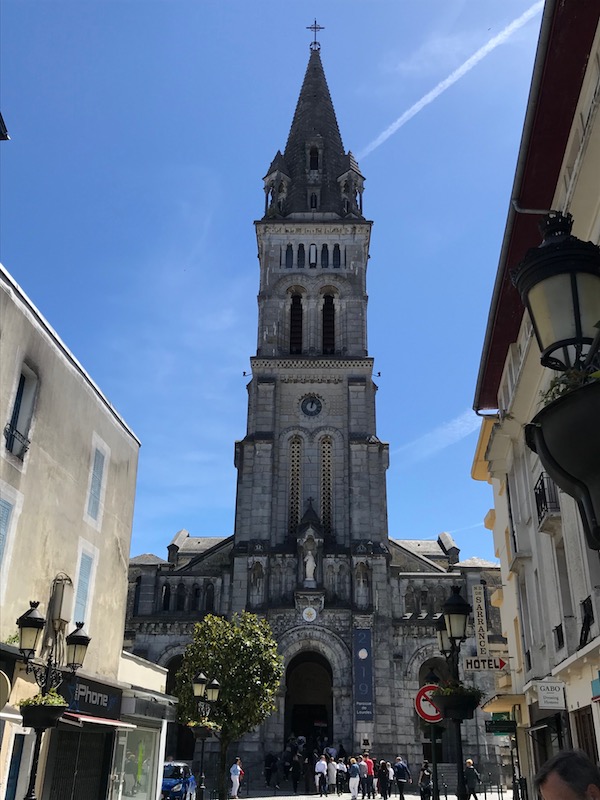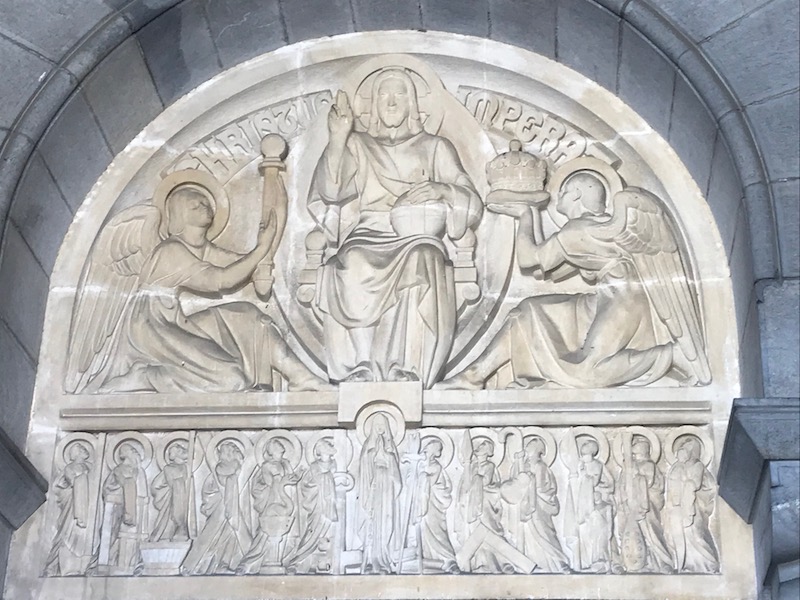Our Blog - Lourdes, France
The last stop on our 3-day trip was to the town of Lourdes, which sits at the foot of the Pyrénées. While the area has been inhabited since prehistoric times, and there was a Roman oppidum hill since the 1st century, it was relatively unknown until roughly 1858. There was the fort, which I'll talk about later, but the main thing about Lourdes is the Sanctuary and the apparitions of the Virgin Mary to a 14-year old local girl named Bernadette.
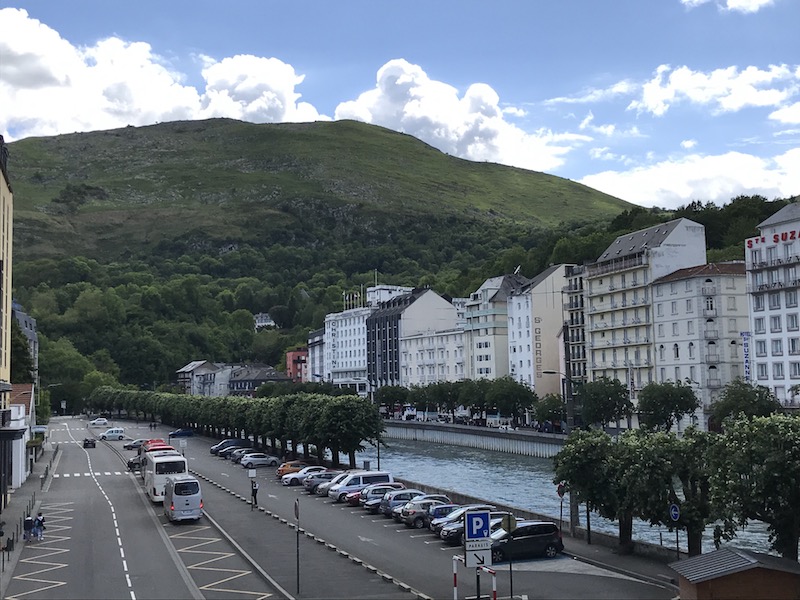
The Hotel de Ville is a former private villa and is probably one of the most unique buildings in town and dates from the end of the 19th century.
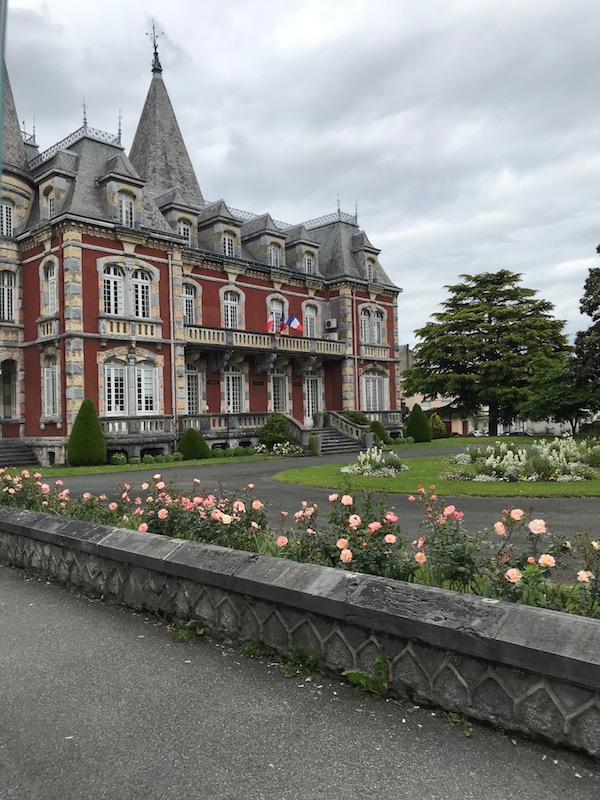

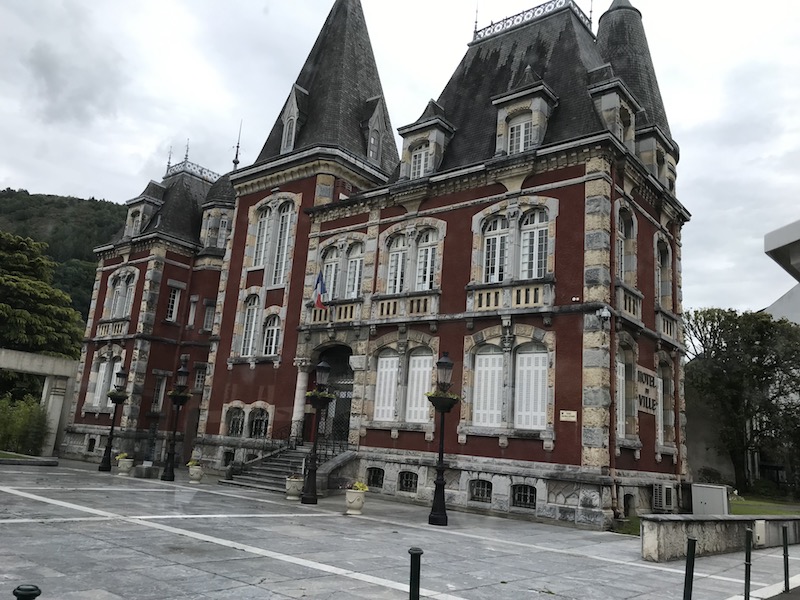
Sanctuary of Our Lady of Lourdes is a place of mass pilgrimage from Europe and other parts of the world and the spring water from the grotto is believed by some Catholics to possess healing properties. We will start with the story ... beginning in February 1858, a 14-year-old peasant girl named Bernadette claimed to have experienced a series of apparitions of a girl dressed in white and with a blue belt around her waist, who eventually introduced herself as the Immaculate Conception, a name by which the Virgin Mary was known. These apparitions took place in a shallow cave or grotto in a little niche above the main cavity of the grotto. She was told to drink from the spring, to build a chapel here, and to have people come here in a procession.
We were able to see most of the Sanctuary on the first afternoon. As you enter the Sanctuary, there is an open space called Rosary Square. The entrance to the Basilica is up a bit and there are two enormous ramps which curve down either side, as well as a set of stairs.
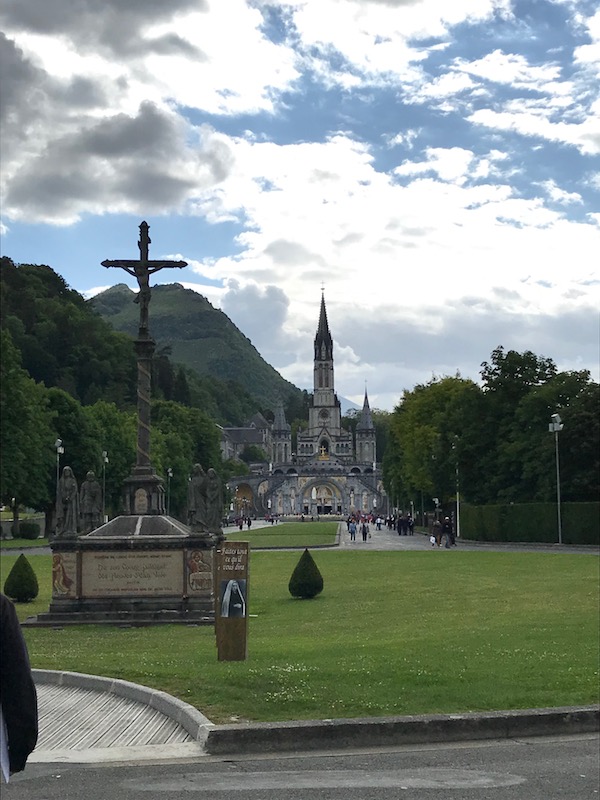
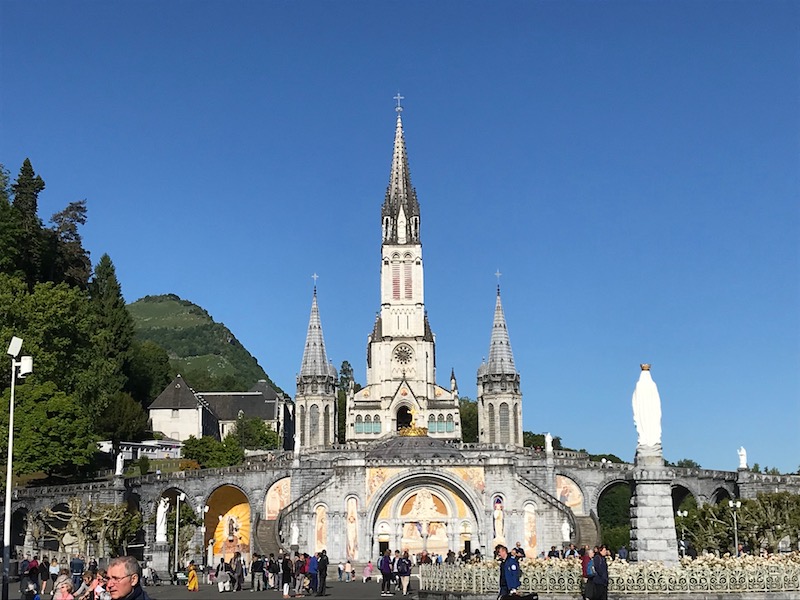
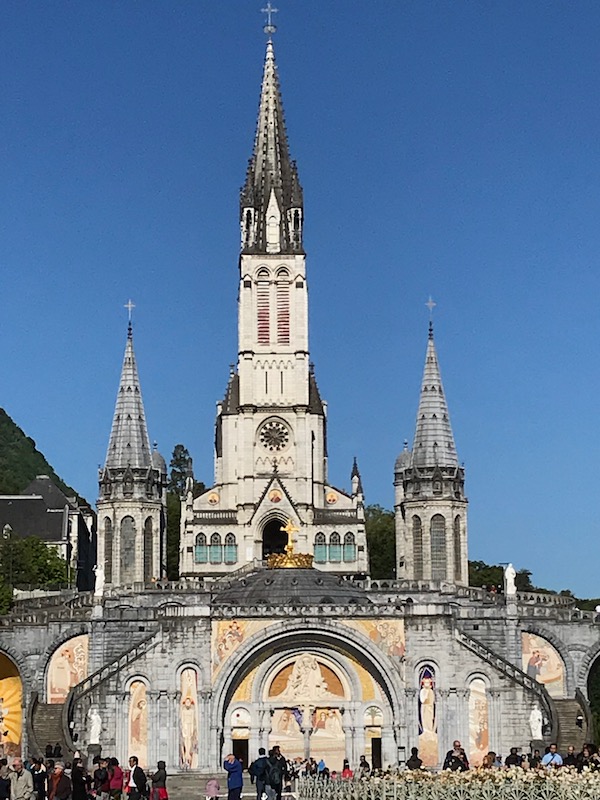
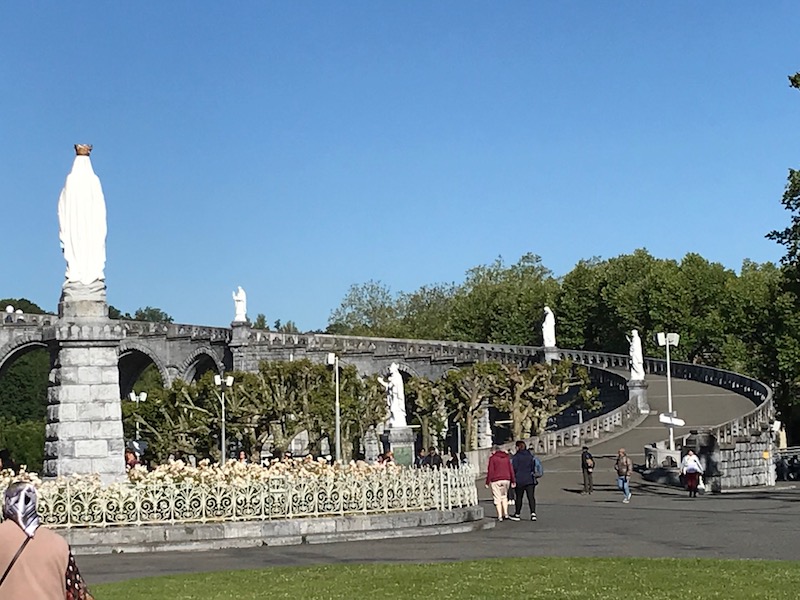
There are actually 3 Basilicas: The Rosary Basilica, The Basilica of the Immaculate Conception (also called the Upper Basilica), and the Basilica of Saint Pie X. Here is the entrance to the Rosary Basilica, flanked by the two ramps and surmounted by the spires of the Upper Basilica. I was completed in 1899 and can hold 1,500 worshippers. Its style is influenced by Byzantine architecture. The exterior facade of the basilica was modified in 2007 to include a depiction of the Luminous Mysteries, which are not a part of traditional fifteen, but another rosary, by Pope John Paul II in 2002.
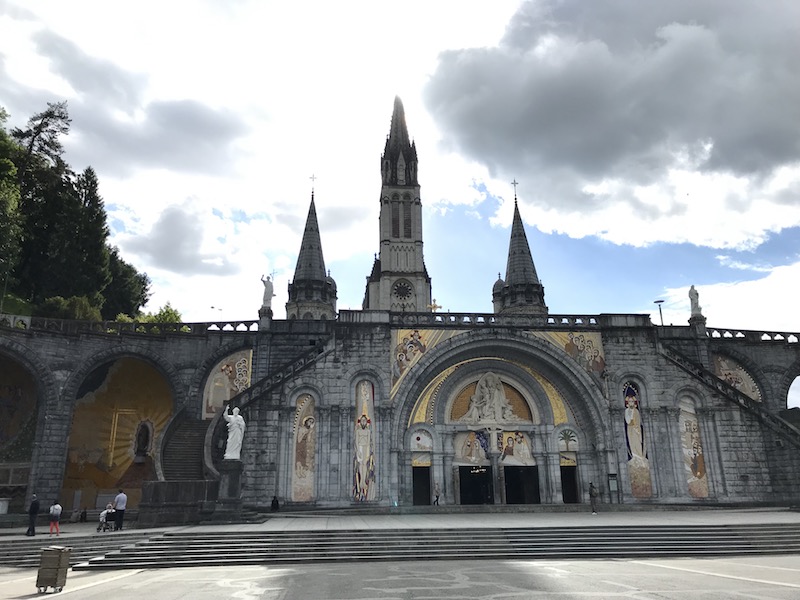




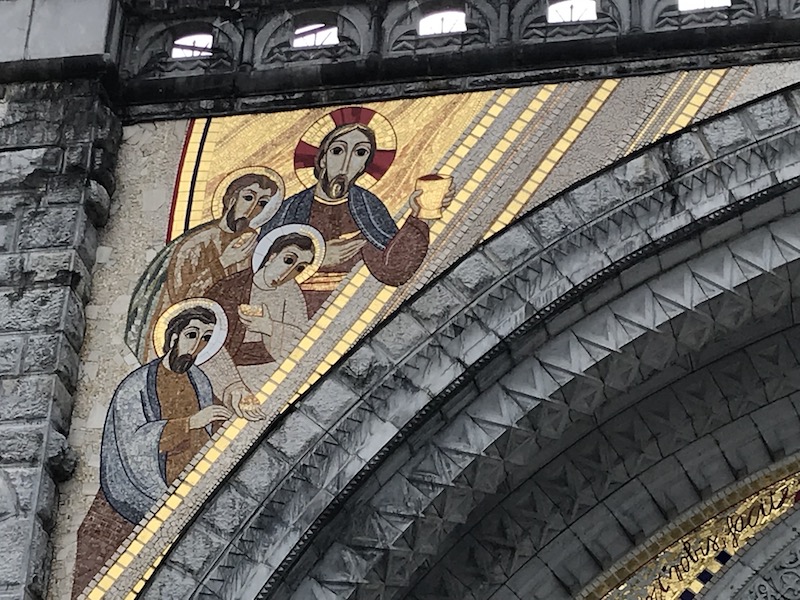
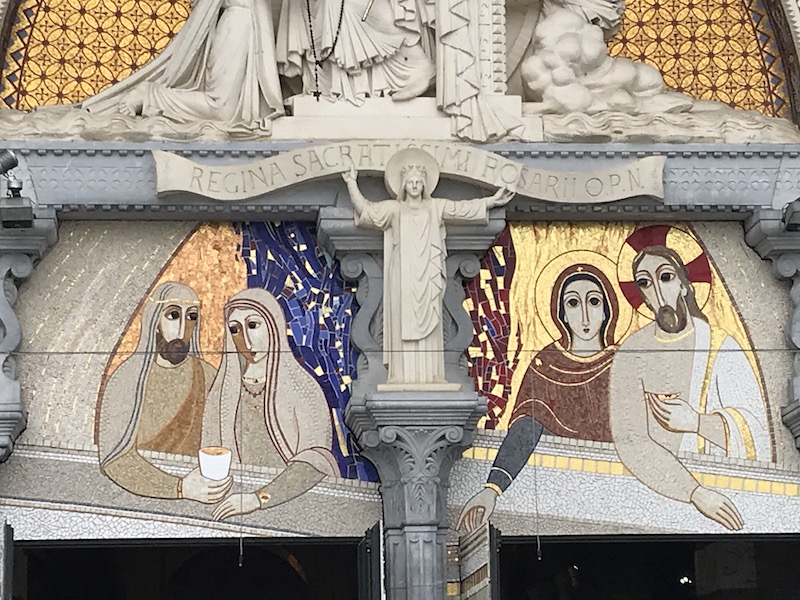
The nave is open and circular, surmounted by a dome. The exterior of the dome is surmounted by a dramatic gilded crown and cross, which were a gift from the people of Ireland in 1924. I have to say, the interior of this Basilica was probably my favorite.

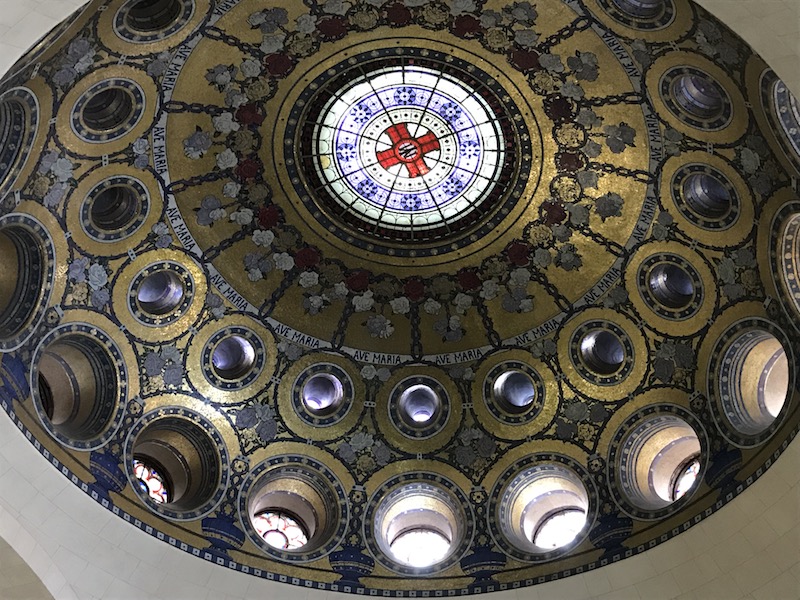
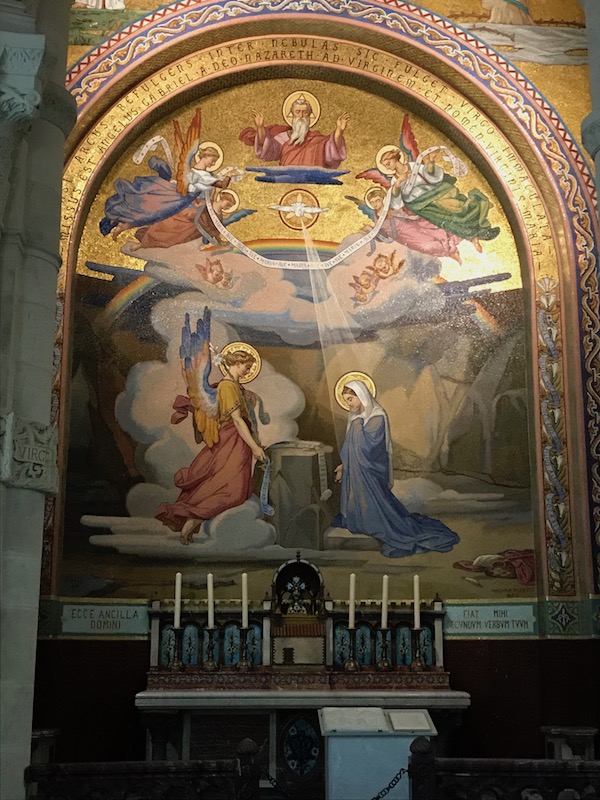
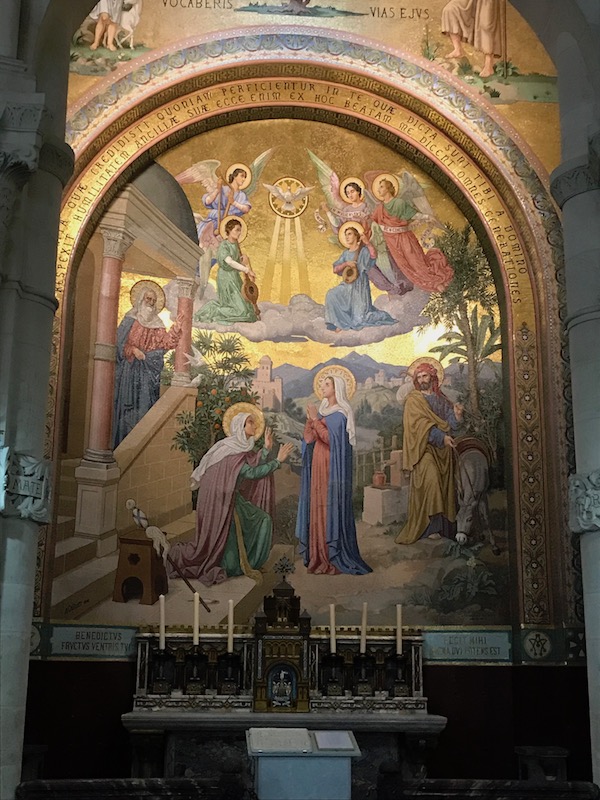
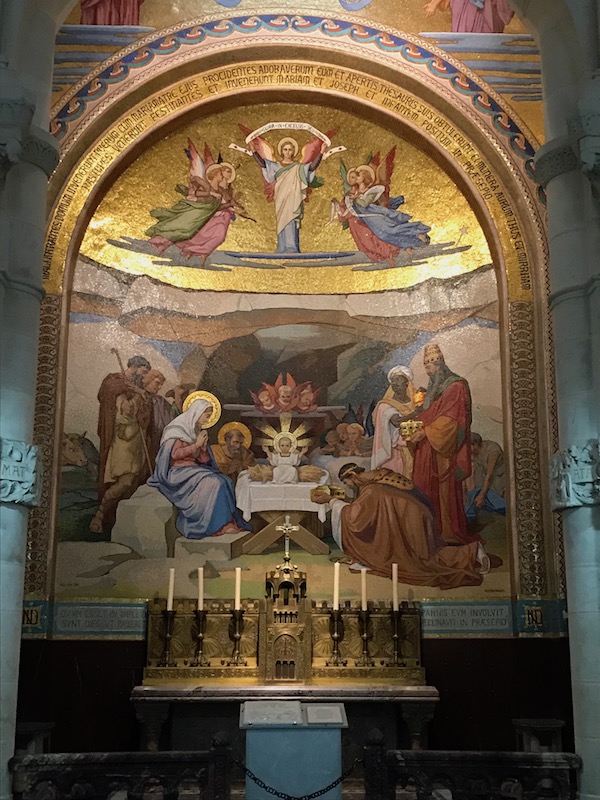


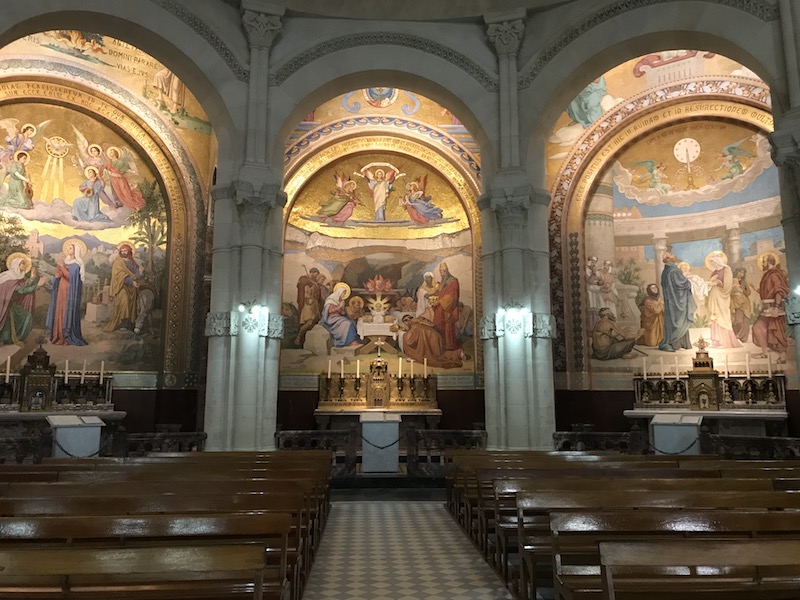
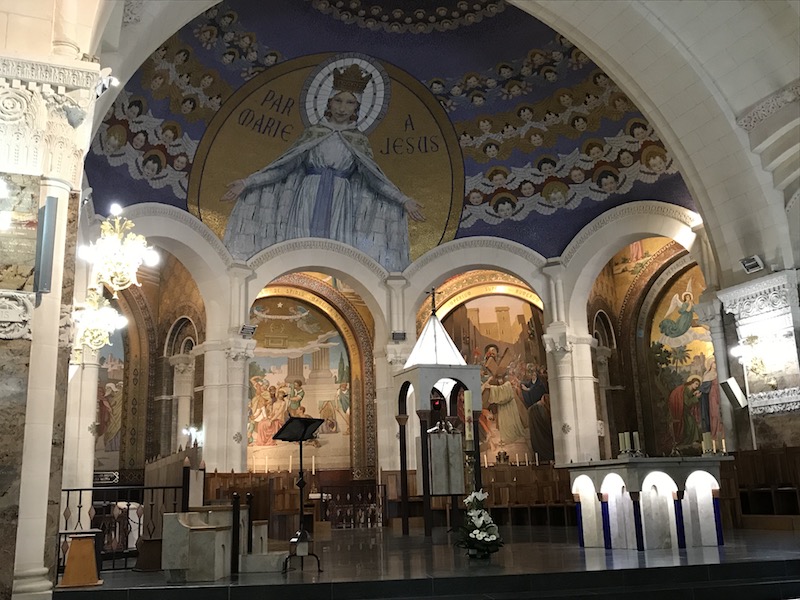

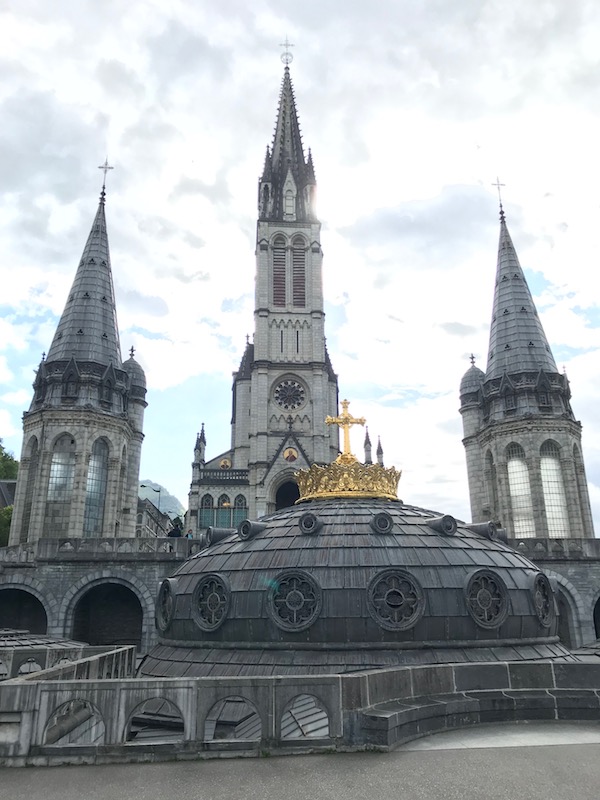
The Basilica of the Immaculate Conception was the second of the churches to be completed, consecrated in 1876. It is an impressive, Gothic style building which is built almost directly above the Grotto.

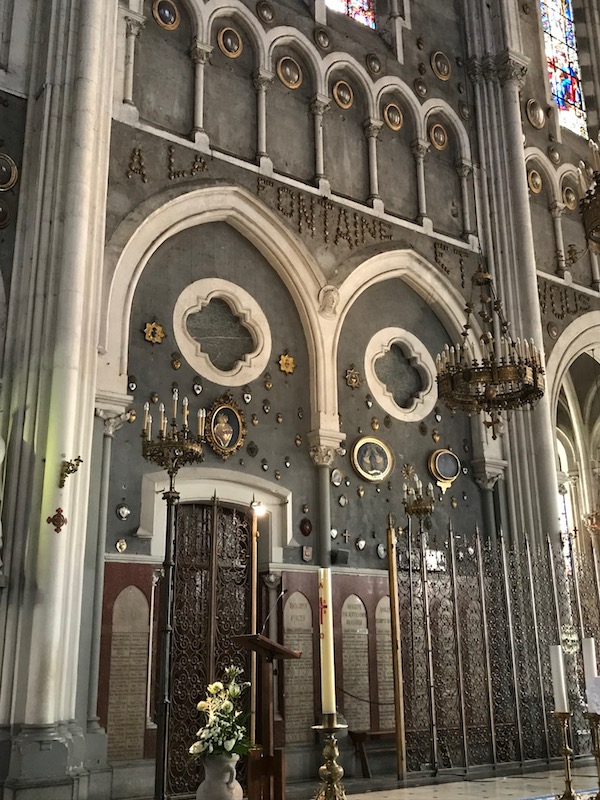
Of course, you know how I love stained glass windows. This one, you can see the dove (the symbol of peace) in the middle, and the bottom part depicts Noah and the flood, and you can just make out the rainbow at the top of the bottom section on both sides.
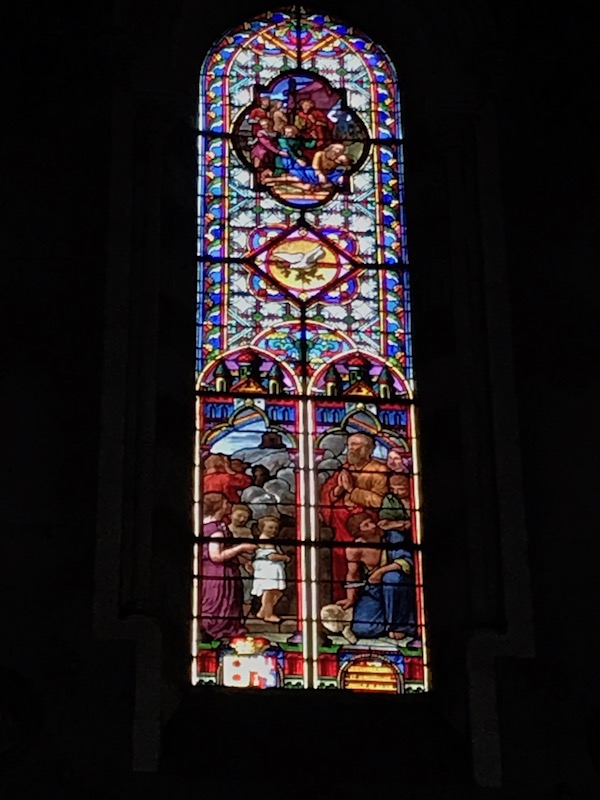
The stained glass from the Chapel of Saint Joachim which shows the birth of Mary at the top, and then the Bishop of Rodez at the Grotto in September 1874.

In contrast to the grandness of Rosary Square and the various basilicas, the grotto where the visions took place is very simple and stark. You can see from the first picture how the Basilica is built almost literally on top of the grotto. You can see how they have benches and candles where they say Mass, and then a line at the back where you go into the grotto itself. You can see the spring that Bernadette is said to have dug (now shielded by a glass cover) and as you walk through, you can touch the rocks.
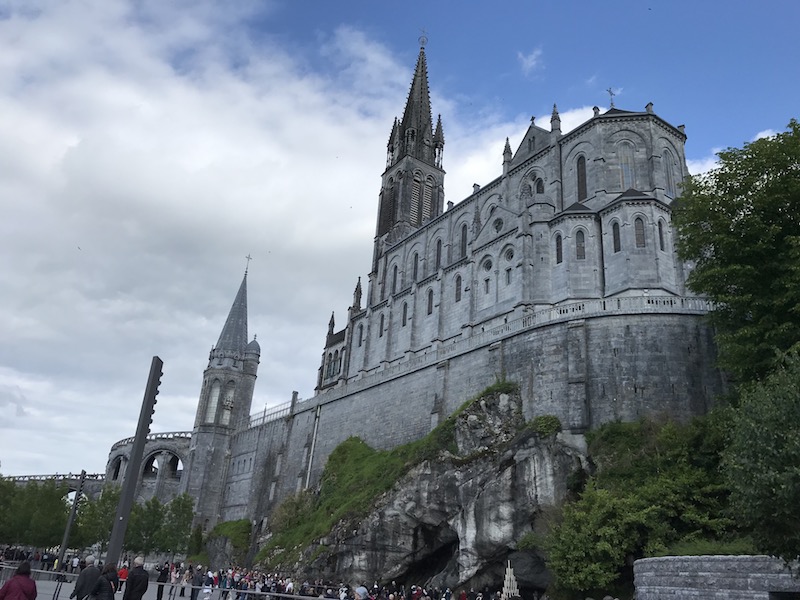
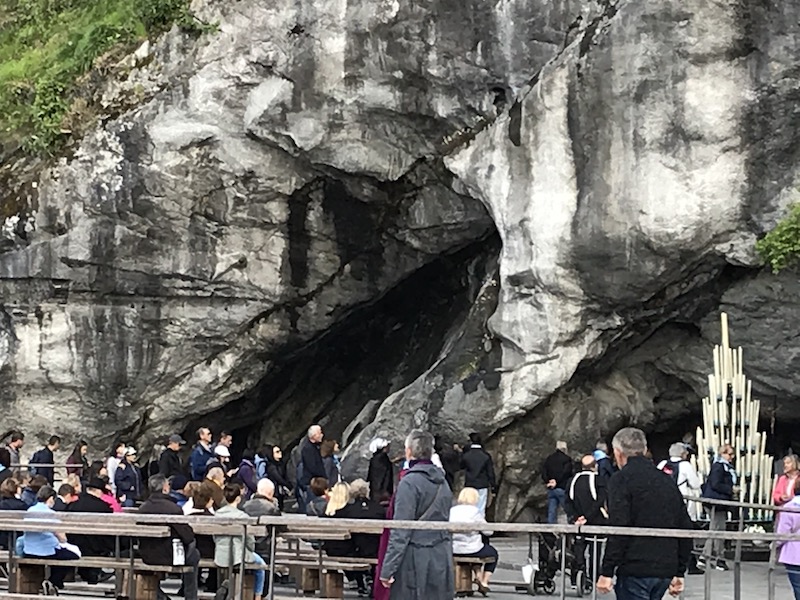
The Basilica of St. Pius X, known as the Underground Basilica, is the largest and most controversial of the churches within the Sanctuary. It was designed by the architect Pierre Vago and completed in 1958 in anticipation of the enormous crowds expected in Lourdes for the centenary of the Apparitions. A modern, concrete building, it is almost entirely underground and can accommodate 25,000 worshippers. The pictures aren't that good since we were here on the Feast of the Ascension, and happened to arrive just as Mass was starting.

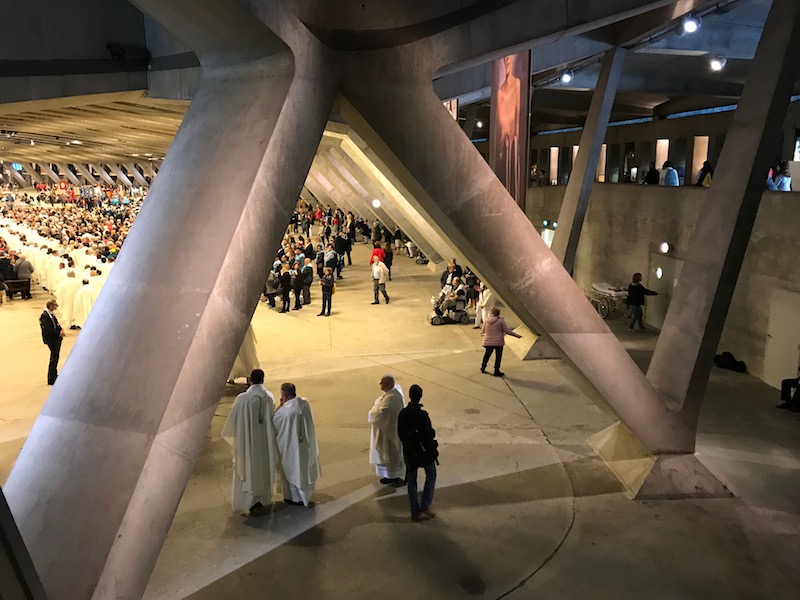

This was the end of May, and you can still see snow on the Pyrenees.

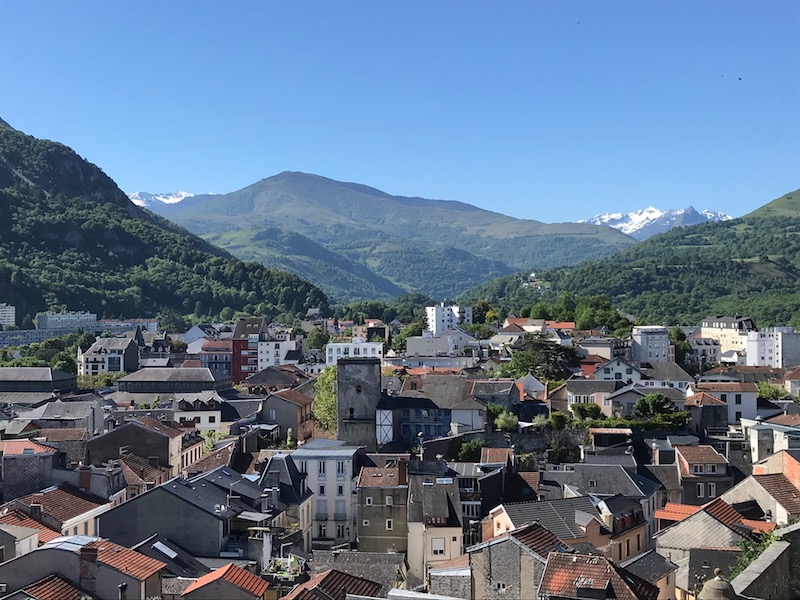

The Chateau Fort sits above the city on a rocky cliff and its origins go back to Roman times (go figure). None of the Roman castle remains but the foundations of the present castle date back to the 11th and 12th centuries. It was besieged in 778 by Charlemagne, and one of the chapel stained glass windows shows this. Ownership went from the kingdom of Navarre to the English in 1360, returning to France at the start of the 15th century. In addition to being able to walk through various parts of the castle, it is also home to the Musée Pyrénéen.
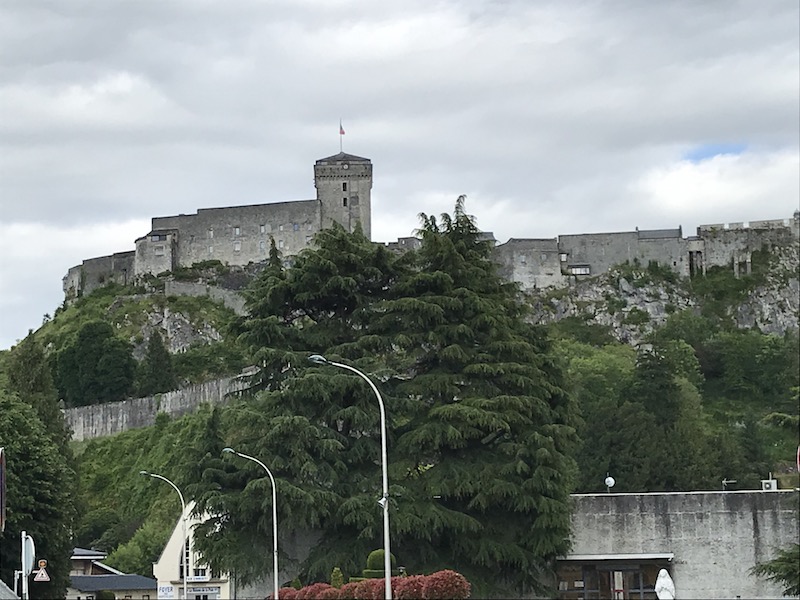
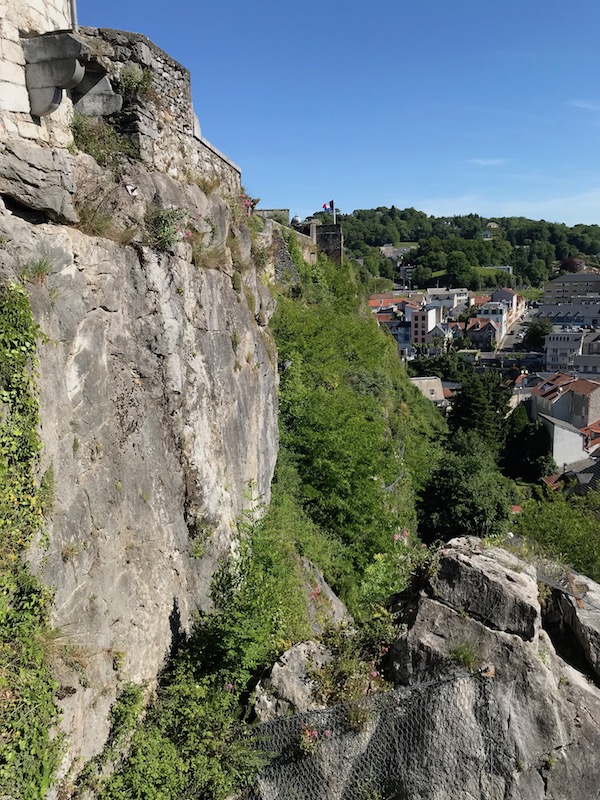
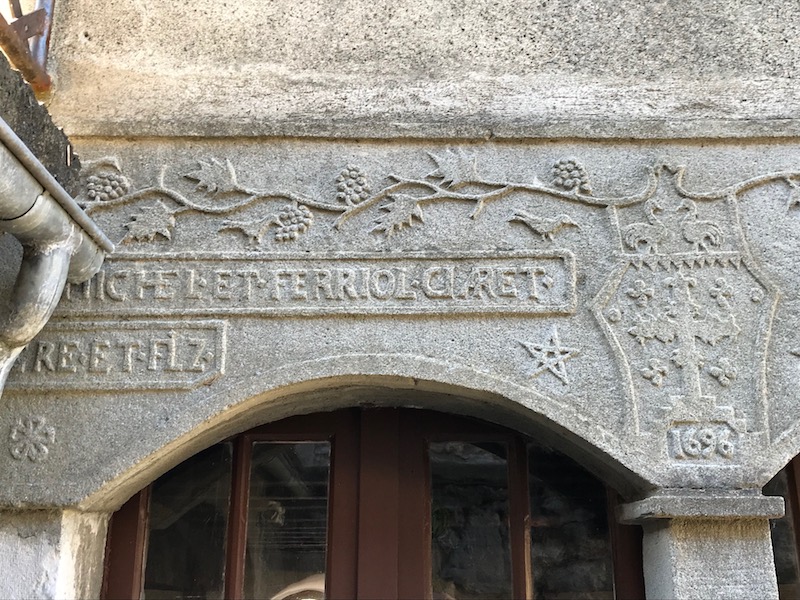
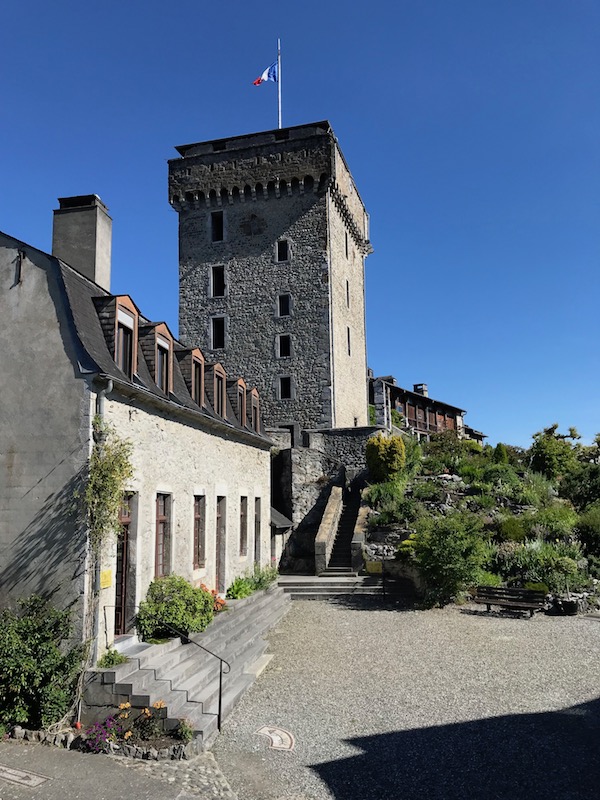


Part of the museum is set up to show life in a typical Pyrénéen household, including this old kitchen.

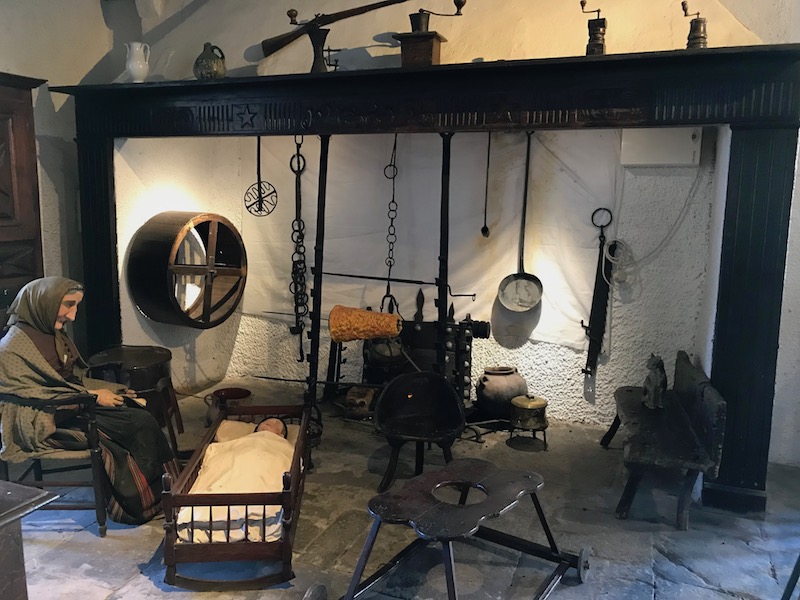
Here you have what is called a Gâteau à la broche (literally, cake on a spit). It came to the Pyrénées from the Balkans at the start of the 19th century. You make it in the shape of a cone by adding successive layers of dough while it turns on the spit to cook over an open fire.
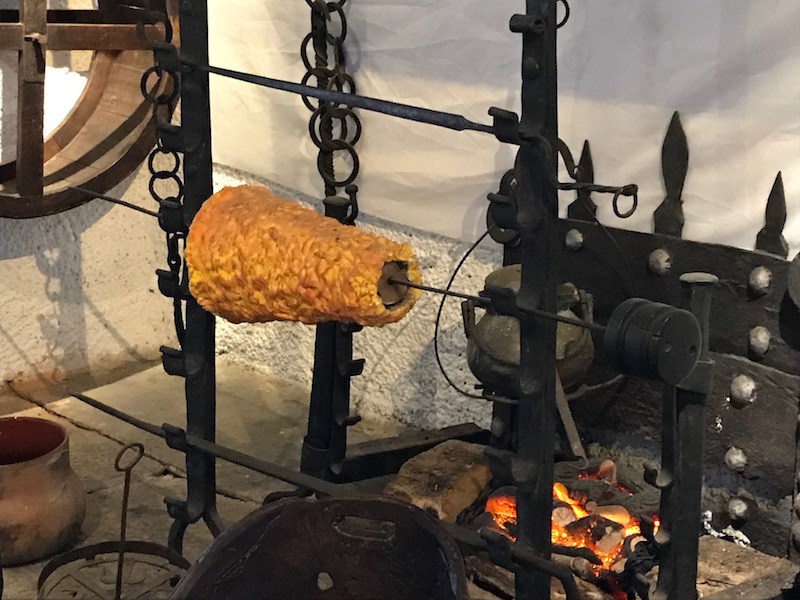
From the castle, you get a nice view of the whole Sanctuary, and you can clearly see the Basilica and the round ramps that go from the square at the bottom up to the entrance.
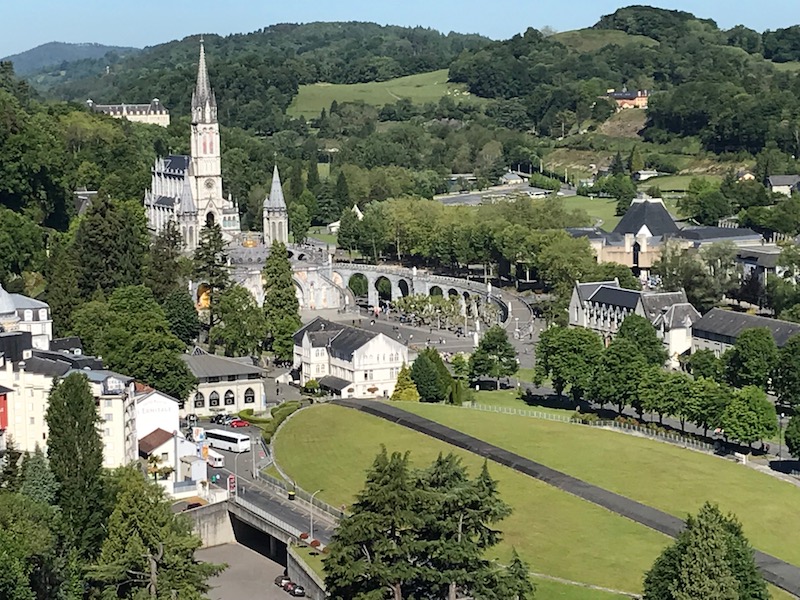
This is a press from 1710.

So, these are a bit interesting. In the Pyrénéen valleys, mourning candles are used for burials. When lit, they symbolize the presence of the person who has died. There are several forms that are used: the first being cords of wax wrapped around a wooden handle, and in the second picture you can see both a cone and the wax cords wrapped in a basket.

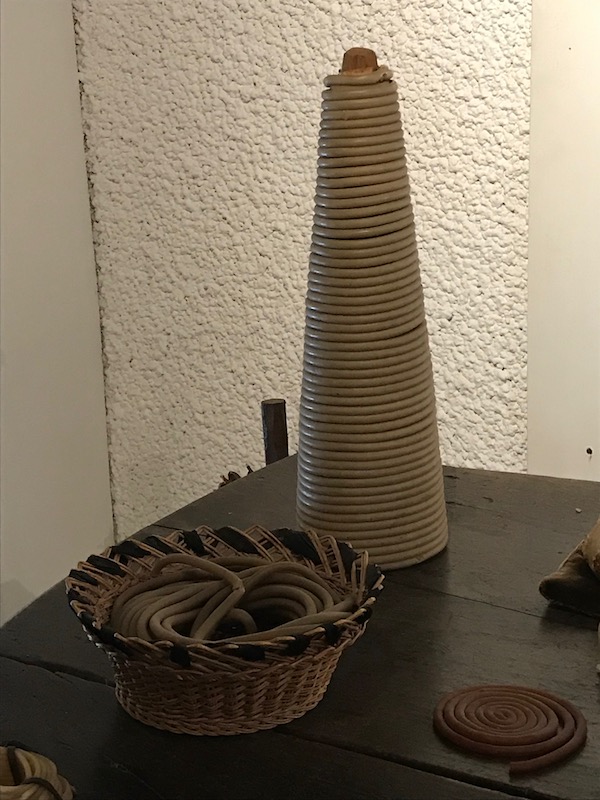
In the garden are miniatures of typical architecture in the area in 1/10 scale.
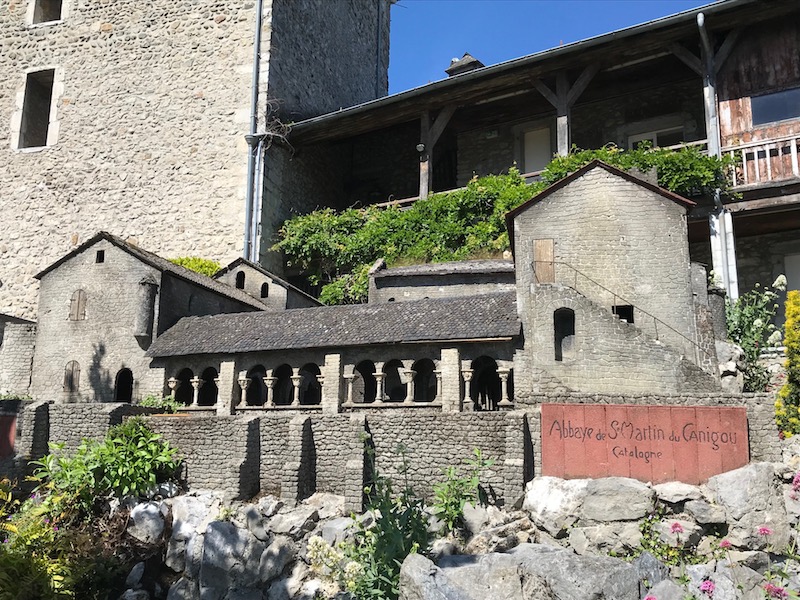
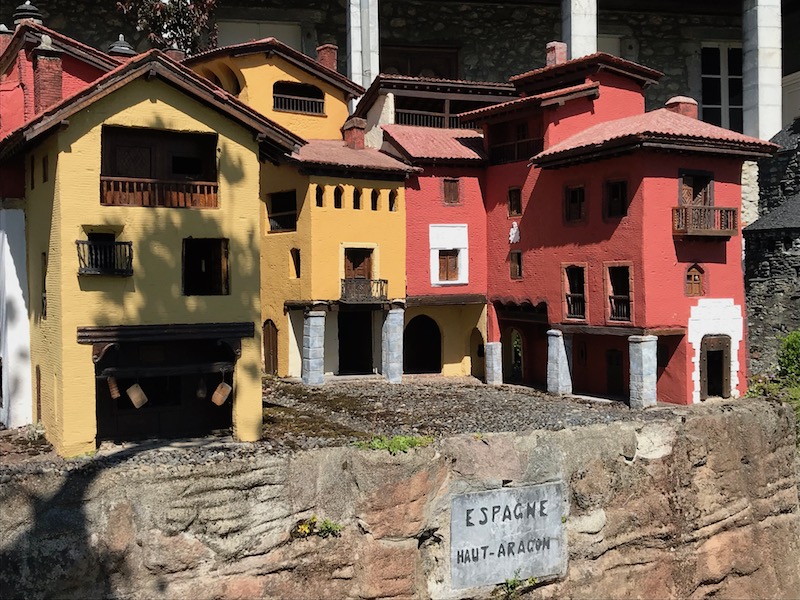
This is the Portcullis gate, which is a typical defensive door. You can see how the inhabitants can drop down the metal gate to keep people out.

The Notre-Dame-du-Château chapel houses the furniture of the former parish church of Saint-Pierre de Lourdes, destroyed in 1904. The present chapel is constructed with recycled material from Saint-Pierre de Lourdes. The stained glass window pays homage to the siege of Charlemagne (you can somewhat read the bottom ... "Charlemange assiega le chateau" which means "Charlemagne besieged the castle".



The Halles de Lourdes is the market hall in the city center. It is an example of metal architecture from the late 19th century.

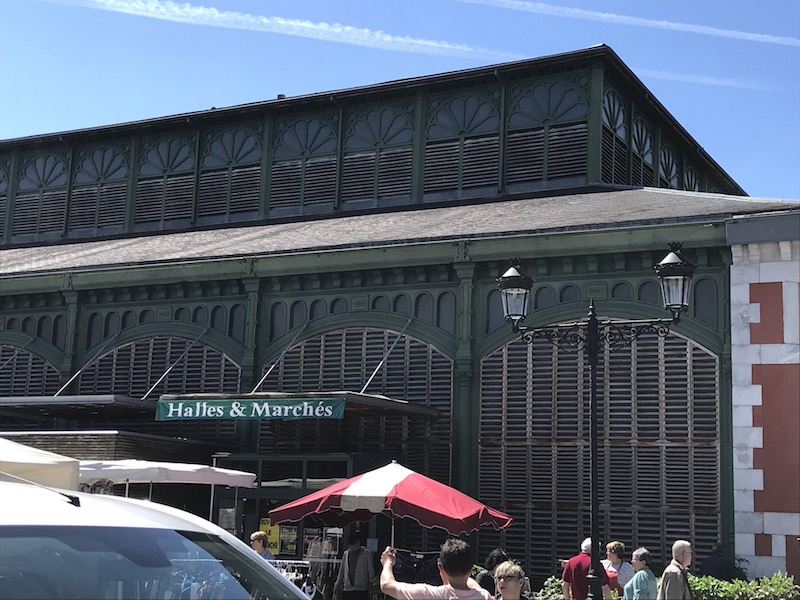
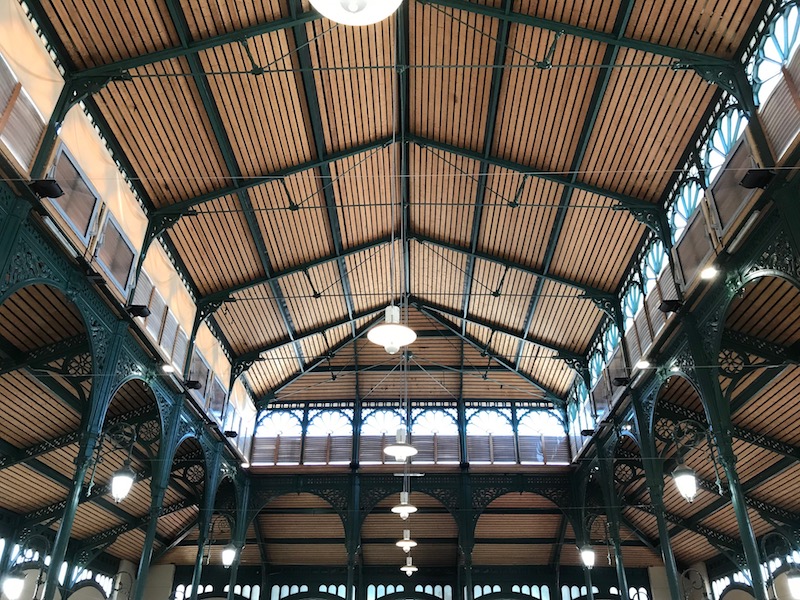
The Tour de Garnavie is the last element still standing of the fortified wall. In the 17th century, it was one of a dozen towers that allowed entry to the fortified city. The tower itself dates back to the 13th century and its architecture if very common for military towers from that time.

The construction of the Sacré-Cœur parish church started in 1875 and was inaugurated in 1903. The bell tower was finished a bit later, in 1936. They were doing work and we weren't able to see most of the church.
